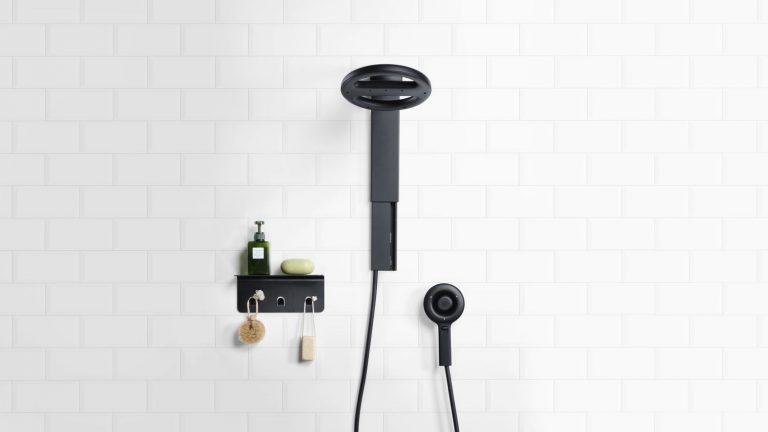‘When we build products that shape the behaviour and daily habits of millions of people, we should be conscious of how these products affect the environment,’ says UX designer Patricia Reiners. In her work, she explores how emerging technologies like AI, voice control, and augmented reality can help us design meaningful products and services for tomorrow’s problems. She is also an enthusiastic advocate for design thinking, and will be leading our upcoming workshop with Adobe on how this strategy can be put to work in the search for a more circular future.
To learn more about the world of user experience and sustainability, we asked Patricia for her take on what makes a design truly work for both people and planet. Her answer: ‘It’s important that it meets the needs of users, focuses on durability and efficiency, follows inclusive design principles, and maintains a clear strategy for purpose.’ But what does this look like in practice? Below, Patricia shares three inspiring examples that we can learn from today.

Lia Wesp for IDEO.
1. Designing a sustainable Food system
The first case on the list highlights the work of IDEO, the organisation often credited with inventing the term ‘design thinking’ and its practice. With its Design For Food Studio, the team is using this methodology to build the products and solutions we need for a resilient food future. ‘What I find so fascinating about this project is their collaborative approach and really deep research,’ comments Patricia. One of their main areas of focus is to break down silos and rebuild the connection between the food and health industries. As part of this shift, they’ve considered mashups with companies like UberEats and Revolution Foods, to help get nutritious food to those who can’t afford or access it.
IDEO also launched the Circular Economy of Food CoLab: a coalition that enables like-minded changemakers to tackle food system challenges at scale. ‘Especially interesting here are their approaches towards designing out waste,’ says Patricia. Since 2018, the CoLab network has built 23 prototypes that promote a circular food system: where natural systems and farming communities are uplifted, and all materials realize their highest value. Patricia adds: ‘This project uses design thinking methods to get to their learnings quickly and I find their results quite impressive. What we can learn from this project is how to think in circular experiences. For example, while we take great care of the ‘unboxing experience,’ a sustainable design would also consider the ‘recycling experience’ of disassembling a product at the end of its useful life.’

2. THE SHOWER OF THE FUTURE
Next, we turn our attention to Nebia, an innovative product that aims to ‘reinvent the way we interact with water altogether.’ ‘They have completely rethought the way water comes out of the sprayer in your shower,’ explains Patricia. She points out that in most cities, water consumption is a serious environmental—and financial—problem. ‘During their daily showers, people are throwing away a lot of money. That’s why the team at Nebia came up with a design solution that creates a better and less wasteful experience. Normal shower heads push water from the pipe out of tiny holes that create pulses of water or diffuse mists. Nebia creates a steady stream of pressured “cozy mist” that still gets the conditioner out of your hair but uses a claimed 70% less water than a typical shower head.’ The result is a win-win for both users and the environment.
‘I find this project especially interesting because they focused on a very small area and rethought the experience in a more sustainable way which can have a huge impact. What we can learn here is to never lose sight of the problems in our day-to-day life. Even small changes can make a big difference. This opens up millions challenges for us designers, where we can rethink learned patterns.’
‘Even small changes can make a big difference. This opens up millions challenges for us designers, where we can rethink learned patterns.’

Jared Murray for Unsplash.
3. DATA THAT DRIVES CHANGE
Last but not least, Patricia brings up a recent innovation in the field of mobility. ‘One area that I find super interesting to watch is the car industry. They definitely have a lot of challenges right now when it comes to designing more sustainable futures,’ she remarks. ‘One design adjustment that I have seen in Volvo cars is a visualisation that helps users learn about smart and eco-friendly driving. For example, pressing on the gas and then braking quickly not only consumes an extremely large amount of gasoline, but also blows the car’s emissions.’ By making this data accessible to drivers, straight through their dashboard, this tiny UX adjustment can lead to a significant alteration in behaviour. For Patricia, this points to the potential—and responsibility—of user experience design. ‘We can learn from it that even small visual design changes can help users to understand their impact.’
ADOBE X WDCD Design Thinking Lab
Interested in learning more about design thinking? This 2-3 October, join us for a two-day workshop that will guide you through this powerful tool for innovation. Presented in partnership with Adobe, this digital event is aimed at all young creatives, dreamers, and entrepreneurs interested in redesigning our relationship with waste. Registration is free, and open until 23 September 2021. To book your spot and learn more about the programme, visit Eventbrite.
To learn more about Patricia Reiners and her work, visit patriciareiners.de or follow her podcast, The Future of UX. You can also catch her at our upcoming Adobe x WDCD workshop, or at the Adobe MAX 2021 Creative Conference.
